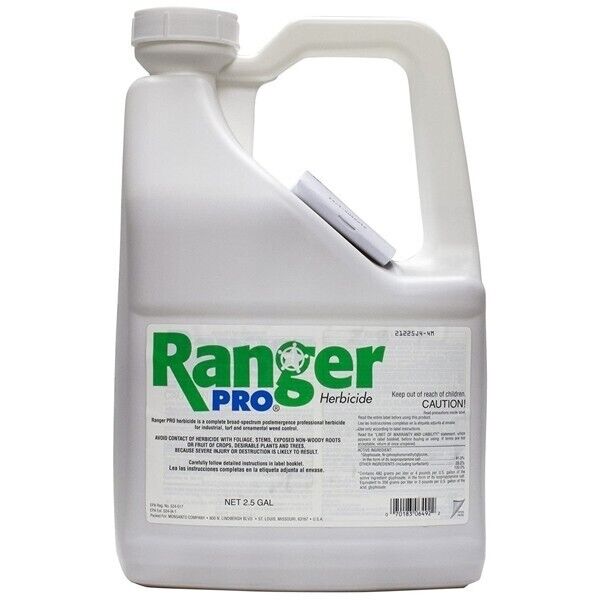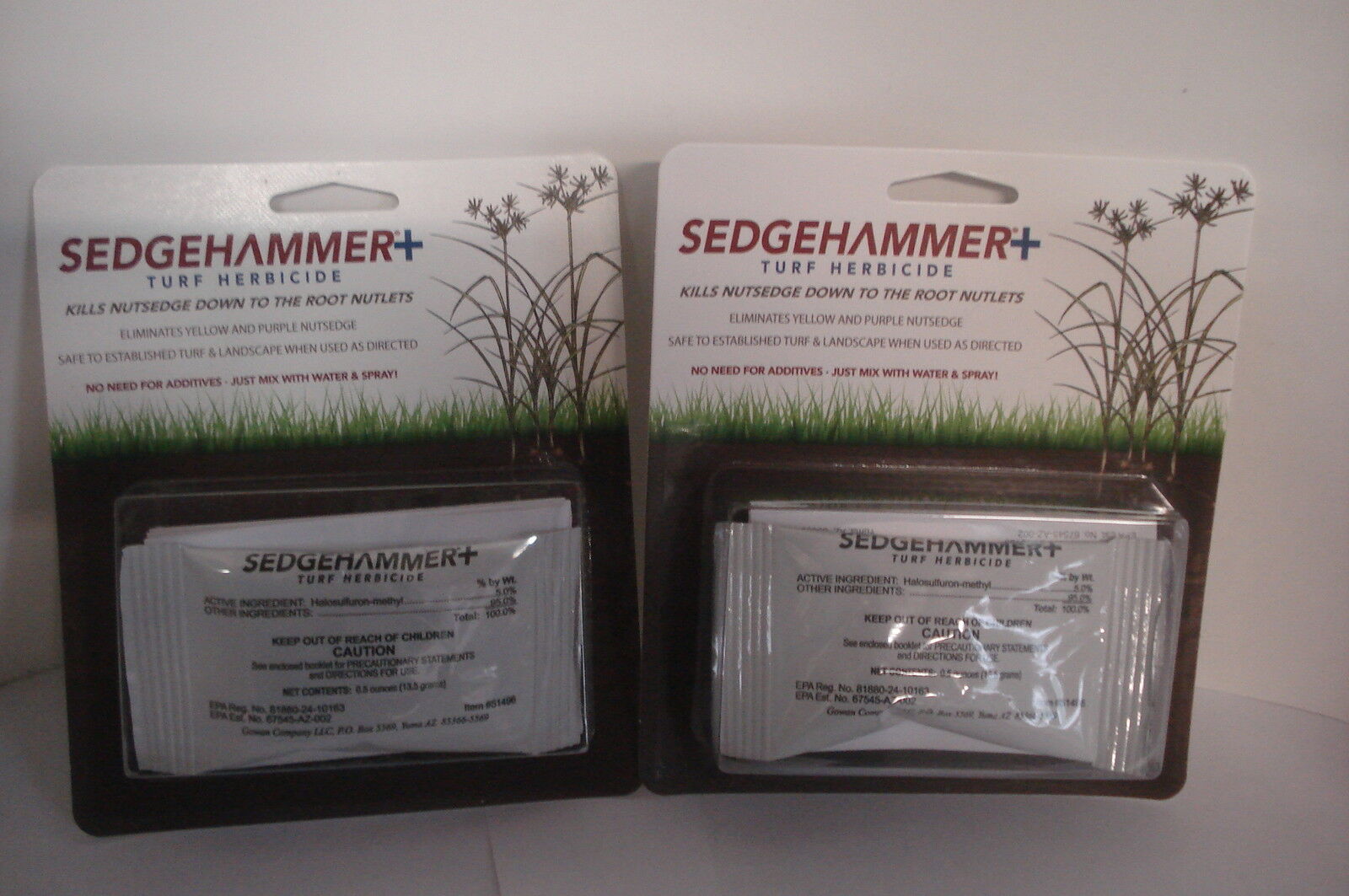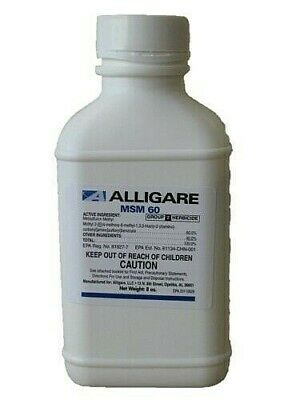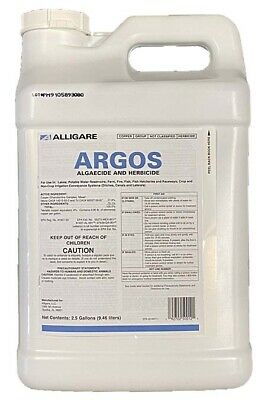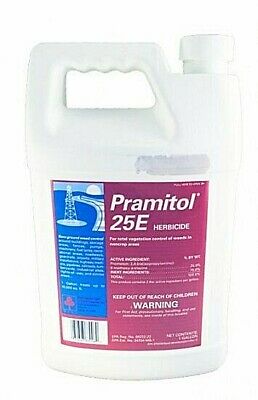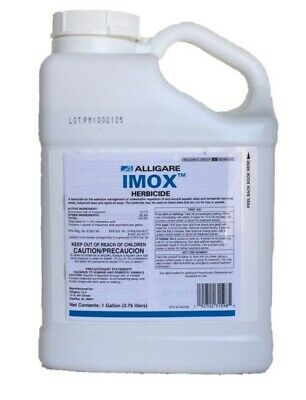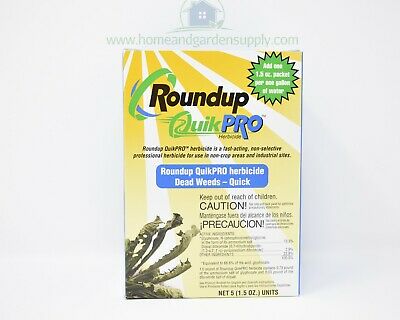-40%
Ranger Pro Herbicide 41% Weed Killer 2.5 Gallons with surfactant !!!
$ 70.22
- Description
- Size Guide
Description
I will follow all applicable federal and state laws and regulations regarding the sale of the pesticideI won’t accept bids from, sell to, or ship to states in which the pesticide is not registered as a general-use product
As buyer it is your responsibility to use as the label describes and as your state or local laws allow. Ranger Pro Herbicide is manufactured by Monsanto and is a non-selective post-emergent herbicide. Ranger Pro's active ingredient is Glyphosate and the product shares the same formula as RoundUp Pro, but at a more cost-effective price.
Ranger Pro comes in a water-soluble formulation and also comes built-in with a surfactant, so adding additional surfactant is not necessary, but you can still optionally include other surfactants.
Ranger Pro is a systemic herbicide, meaning it is absorbed by the target weed either from the foliage or from the root system and moves through the entire plant, killing it while sparing adjacent plants that are not contacted by the product.
Tools Needed
To apply Ranger Pro Herbicide, you will need either a backpack sprayer, handheld pump sprayer, or a professional skid sprayer for large volume applications.
How to Use
Step 1:
To figure out how much Ranger Pro Herbicide you need, you will need to first determine the size of the target area. To do this, measure and calculate the target area's length x width to get the total square footage of the area to be treated. There are different dilution ratios recommended on the label and what you select will depend on the weed type, height, and severity of growth. For general spray-to-wet applications for annual weeds and perennial weeds, use a 0.5 to 10 percent solution of Ranger Pro at a rate of 2/3 fl. oz. to 13 fl. oz. per gallon of water to cover 1,000 sq. ft. Use the higher rate for weeds over 6 inches tall. Check the label for specifics rates depending on the weed you're trying to control.
Step 2:
Fill the spray tank with the required amount of water. Add the correct amount of Ranger Pro to the water near the end of filling the tank. If you are using a backpack or pump-up sprayer, it is suggested that the labeled amount of Ranger Pro Herbicide be mixed with water in a larger container then fill the sprayer with the mixed solution.
Step 3:
Apply the Ranger Pro Herbicide mixture to targeted weeds at low pressure, spraying to wet but before the point of runoff. Use a fan nozzle spray setting for uniform and thorough coverage.
Where to Use
Ranger Pro Herbicide is formulated for use on outdoor areas such as recreational areas, parks, farms, croplands, apartment complexes, Christmas tree farms, ditch banks, ornamental plant nurseries, golf courses, lumber yards, warehouses, schools, storage areas, railroads, constructions sites prior to building or laying asphalt, conservation properties, and other areas.
When to Use
Apply Ranger Pro to control target weeds during daylight hours when the weather is sunny, warm, and calm so that the chemicals move through the weeds faster. It is also beneficial to make applications when the plants are young and actively growing. Do not treat weeds if there is drought, disease, or insect damage as this may cause weed control to be less effective in allowing the product to soak into the foliage. Spray on calm days when wind speeds are low to minimize accidental spray drift.
Safety Information
Ranger Pro Herbicide is safe to use around children or pets when applied according to the product label. Always wear the proper personal protective equipment when mixing or applying Ranger Pro Herbicide (gloves, long pants, safety mask, protective eyewear).
Special Considerations
Remember that Ranger Pro Weed Killer is a non-selective, post-emergent herbicide and will negatively affect or kill desired plants if foliar contact is made. Always be mindful of spray drift so that you do not accidentally spray wanted turf grass or other desirable plants.
Restricted Use
No
Brand
MONSANTO
Pro Tip
"When spraying large areas with Ranger Pro, it's a good idea to use an indicator dye to not only keep track of your spraying to avoid over application, but to also help you see any spray drift."
Product Drawbacks
Ranger Pro Herbicide is a non-selective herbicide so you have to be very careful when spraying it in areas where desired vegetation is in close proximity.
Target Pests
Ranger Pro Herbicide can control annual weeds, Perennial weeds, Brush Weeds, Tree Seedlings. Alder, American Hornbeam, Annual Bluegrass, Annual Fleabane, Annual Sowthistle, Annual Spurge, Artichoke Thistle, Ash, Bahiagrass, Barley, Barnyardgrass, Bearclover, Beech, Bentgrass, Bermudagrass, Birch, Bitter Cherry, Bittercress, Black Cherry, Black Locust, Black Nightshade, Black Oak, Black Sage, Blackberry, Blackgum, Blue Mustard, Blue Vervain, Bracken, Brackenfern, Brazilian Peppertree, Bristly Starbur, Broadleaf Signalgrass, Bromegrass, Broomsedge, Broomsedge Raspberry, Browntop Pamicum, Bulbous Bluegrass, Buttercup, California Buckwheat, California Sage Brush, California Yerba Santa, Canada Thistle, Canafa Thistle, Carolina Foxtail, Cascara, Castorbean, Catsclaw, Cattail, Ceanothus, Chamise, Cheatgrass, Cheeseweed, Chervil, Chickweed, Chinese Tallowtree, Cocklebur, Cogongrass, Common Groundsel, Common Milkweed, Common Mullein, Common Purslane, Common Ragweed, Common Rye, Corn, Corn Speedwell, Coyotebrush, Crabgrass, Crolina Geranium, Curly Dock, Dallisgrass, Deerweed, Dewberry, Dogfennel, Dogwood, Downy Brome, Dwarfdandelion, Eastern Mannagrass, Eastern Redbud, Eclipta, Elderberry, Elm, Eucalyptus, Fall Panicum, Falsedandelion, Fescue, Fiddleneck, Field Bindweed, Field Pennycress, Field Sandbur, Filaree, Fivehook Bassia, Florida Beggarweed, Florida Pusley, Foxtail, French Broom, German Ivy, Giant Ragweed, Giant Reed, Goosegrass, Gorse, Grain Sorghum, Guineagrass, Hairy Fleabane, Hasardia, Hawthorn, Hazel, Hemp Dogbane, Hemp Sesbania, Henbit, Hickory, Honeysuckle, Hophornbeam Copperleaf, Horsenettle, Horseradish, Horseweed, Iceplant, Itchgrass, Japanese Brome, Johnsongrass, Johnsongrass seedling, Jointed Goatgrass, Junglerice, Kentucky Bluegrass, Kikuyugrass, Knapweed, Knotweed, Kochia, Kudzu, Ladysthumb, Lamb's-Quarters, Lantana, Laurel Sumac, Leafy Spurge, Lespedeza, Little Barley, London Rocket, Madrone Resprouts, Mandzanita, Marestail, Mayweed, Medusahead, Milkweed, Monkey Flower, Morningglory, Multiflora Rose, Musk Thistle, Napiergrass, Oats, Orchardgrass, Pampasgrass, Paragrass, Pennsylvania Smartweed, Perennial Pepperweed, Perennial Ryegrass, Persimmon, Phragmites, Pigweed, Pin Cherry, Pine, Plains Coreopis, Poison Hemlock, Poison Ivy, Poison Oak, Poison Sumac, Poorjoe, Post Oak, Prickly Lettuce, Prickly Sida, Puncturevine, Purple Nutsedge, Purslane Speedwell, Quackgrass, Quaking Aspen, Red Clover, Red Maple, Red Rice, Redroot Pigweed, Redvine, Reed Canarygrass, Rough Fleabane, Russian Olive, Russian Thistle, Rye, Ryegrass, Salmonberry, Saltcedar, Sassafras, Scotch Broom, Scrub Oak, Shattercane, Shepherd's-Purse, Sicklepod, Sicklepot, Silver Bluestem, Silverleaf Nightshade, Smallseed Falseflax, smartweed, Smooth Bromegrass, Smooth Sumac, Smutgrass, Sourwood, Southern Red Oak, Southern Waxmyrtle, Spanishneedles, Spotted Spurge, Sprangletop, Spurge Prostrate, Spurred Anoda, Stinkgrass, Sugar Maple, Sugarbrush Sumac, Sugarbush Sumac, Sumac, Sunflower, Sunflowers, Swamp Smartweed, Sweetgum, Swordfern, Tall Fescue, Tanoak Resprouts, Tansy Mustard, Teaweed, Texas Blueweed, Texas Panicum, Texas Paniicum, Thimbleberry, Tickswwd, Timothy, Torpedograss, Toyon, Tree Tobacco, Trumpet, Trumpetcreeper, Tumble Mustard, Umbrella Spurry, Vaseygrass, Velvetgrass, Velvetleaf, Vine Maple, Virginia Copperleaf, Virginia Creeper, Virginia Pepperweed, Volunteer Corn, Western Wheatgrass, Wheat, White Clover, White Oak, White Sage, Wild Mustard, Wild Oats, Wild Sweet Potato, Willow, Winged Sumac, wirestem Muhly, Witchgrass, Woolly Cupgrass, Woolly-Leaf Bursage, Yellow Nutsedge, Yellow Poplar, and Yellow Rocket. Please refer to the product label for a complete list of target weed species.
Application Equipment
Backpack Sprayer, Pump Sprayer, Spray Rig
Application Methods
Broadcast Spray, Spot Treatment
Active Ingredient
Glyphosate- 41% (same active ingredient as Roundup)
Chemical Type
Herbicide
Formulation
Suspended Concentrate
Mix Rate
Ranger Pro mix rates vary depending on percentage ratios of .5%, 1%, 1.5%, 2%, 5% and 10%. Ranger Pro can be mixed between 2/3 oz. to 13 oz. per gallon of water depending on the desired dilution ratio. For more specific application rates please refer to the label.
Shelf Life
Ranger Pro Herbicide will last 2 to 3 years in storage if kept in a cool, dry area.
Yield
A 2.5 Gallon Jug of Ranger Pro Herbicide at an average rate of 2 oz. per gallon, can treat up to 160,000 sq. ft. of area.
Use Sites
Outdoors
Time to Kill
Ranger Pro moves systemically through the foliage or root system. Effects are visible on most annual weeds within 2 to 4 days, but on most perennial weeds may not occur for 7 days or more. Extremely cool or cloudy weather following treatment may slow the activity of this product and delay development of visual symptoms.
Comparable Products
Glyphosate 4 Weed Killer, Eraser 41% Glyphosate, Roundup Pro, Gly Pho-Sel Pro
EPA Registration No.
524-517
